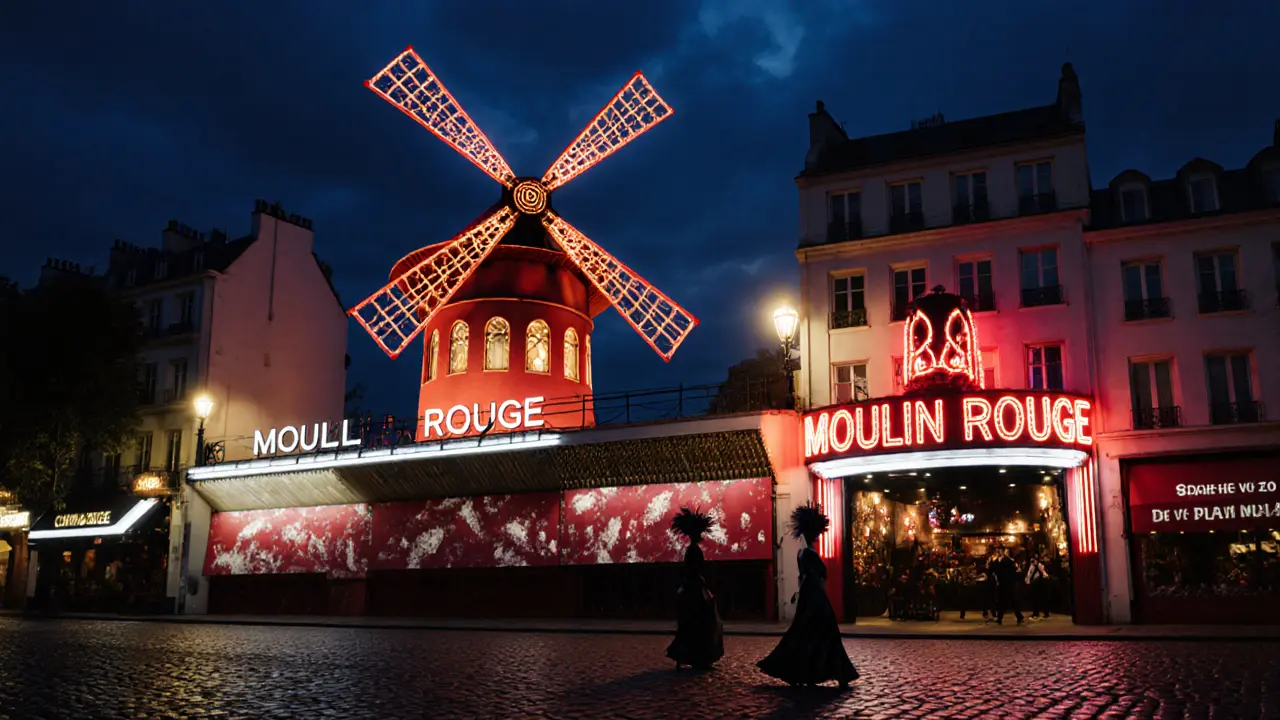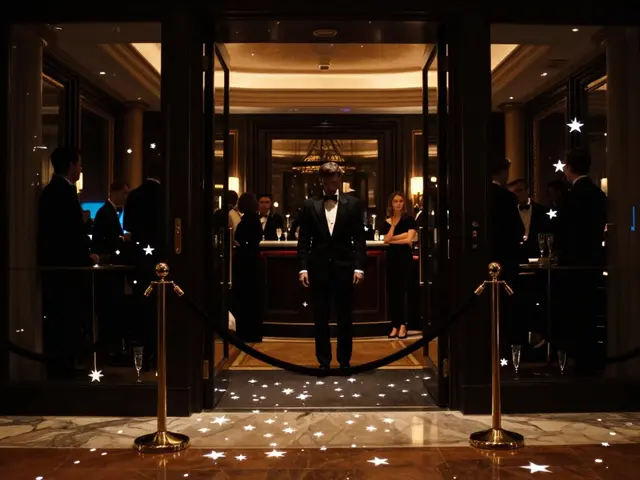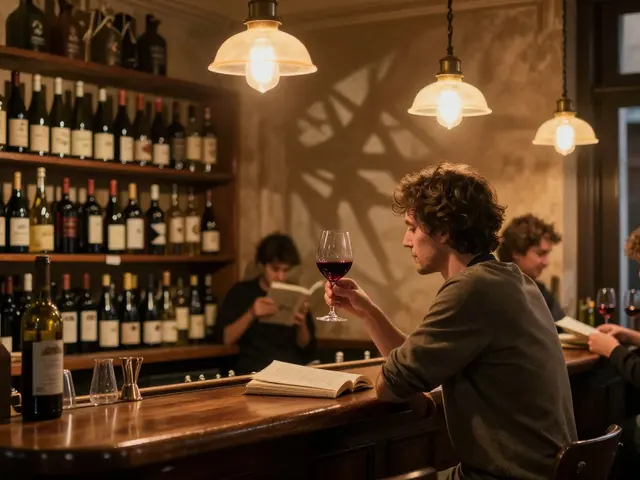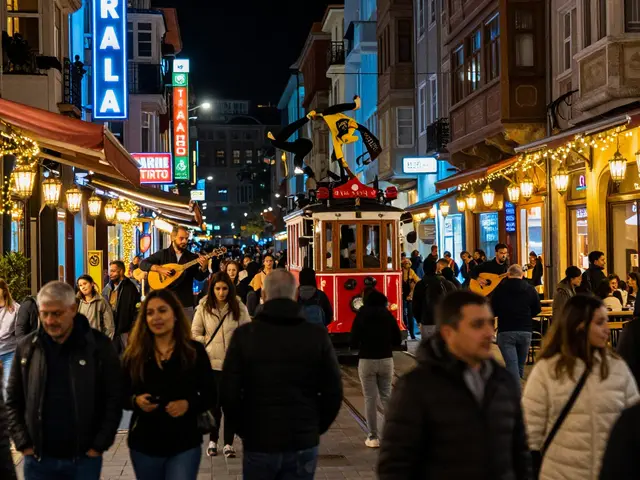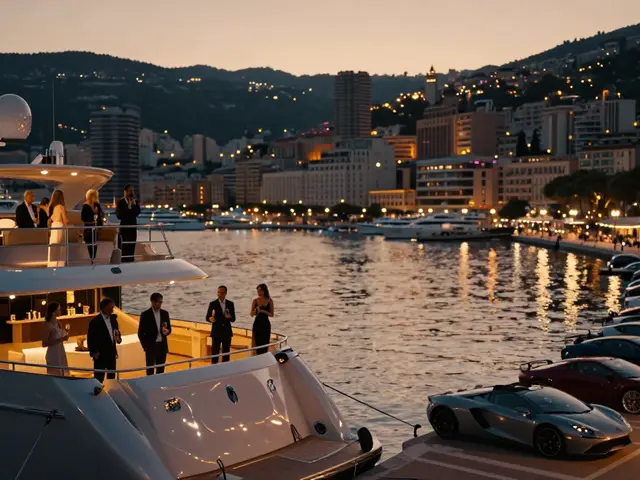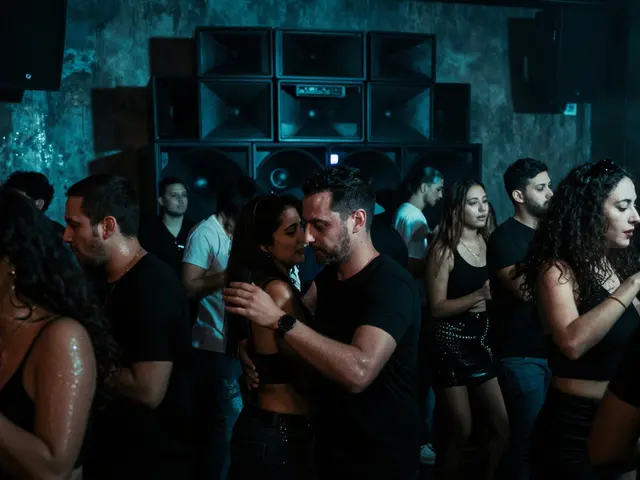Paris doesn’t sleep. Not really. By 11 p.m., most cities quiet down. In Paris, the real night is just starting. The city’s nightlife isn’t just about drinking or dancing-it’s a layered experience, woven from history, art, and the quiet rhythm of people who know how to savor the hours after dark. You won’t find neon signs and loud DJs everywhere. Instead, you’ll find dimly lit jazz clubs tucked behind unmarked doors, cafés where the same regulars have been reading newspapers since the 1970s, and cabarets that still make your heart race like they did a century ago.
The Legacy of the Cabaret
The Moulin Rouge isn’t just a tourist attraction-it’s a living relic. Opened in 1889, it was the birthplace of the can-can, a dance so wild it shocked the bourgeoisie and became the symbol of Parisian rebellion. Today, the red windmill still turns above Montmartre, and the shows still feature feathered headdresses, corsets, and high-kicking dancers. But the real magic isn’t in the spectacle. It’s in the fact that this place still feels alive, not like a museum. The orchestra plays live. The singers don’t lip-sync. The audience? Mostly locals who’ve brought their kids to show them what Paris once was.
Don’t mistake it for a theme park. Tickets start at €100, and you’re paying for history, not just entertainment. If you want something grittier, head to Le Chat Noir in Montmartre. It’s not the original-that closed in 1915-but the modern version keeps the spirit alive with avant-garde performances and poetry nights. It’s where artists like Toulouse-Lautrec once drank, sketched, and plotted revolutions.
The Quiet Revolution of Late-Night Cafés
Parisian cafés aren’t just places to drink coffee. They’re living rooms with chairs and espresso machines. In the 1920s, Hemingway wrote at Café de Flore. Sartre debated existentialism at Les Deux Magots. Today, those cafés still serve coffee, but the real nightlife action has moved to smaller, quieter spots.
Look for places like Le Comptoir Général in the 10th arrondissement. It’s not a café. It’s not a bar. It’s both, and neither. The space feels like a forgotten colonial attic filled with books, vintage lamps, and a bar made from a repurposed piano. You can order a Negroni at 2 a.m., sit by the window, and listen to a jazz trio playing without a stage. No one claps. No one takes photos. You just feel like you’ve stumbled into a secret.
Or try Bar à Vin in the 11th. It’s tiny. No menu. Just a chalkboard with five wines by the glass, all under €10. The owner, a former sommelier from Burgundy, will ask you what you’re in the mood for-fruit, earth, spice-and pour you something you’ve never heard of. You’ll leave with a new favorite and a name to remember.
The Underground Jazz Scene
Paris has more jazz clubs than any other European city. Not because it’s trendy, but because jazz found a home here in the 1930s when Black American musicians fled segregation in the U.S. They played in basements, on street corners, and in clubs that didn’t ask for papers. That tradition never died.
Head to Le Caveau de la Huchette in the Latin Quarter. It’s been open since 1947. The floor is sticky with decades of spilled wine. The musicians don’t wear suits-they wear jeans and t-shirts. The crowd? Tourists, yes, but mostly Parisians in their 60s who’ve been coming here since they were 20. The band plays standards, but they improvise like they’re making it up as they go. That’s the point. Jazz isn’t about perfection. It’s about presence.
For something newer, go to Le Sunset in the 18th. It’s a converted garage with a red velvet curtain and a sound system that makes every trumpet note vibrate in your chest. They host emerging French jazz artists every Thursday. No cover before midnight. You can walk in at 1 a.m., order a glass of Beaujolais, and sit on a stool next to a 22-year-old saxophonist who just won a national award.
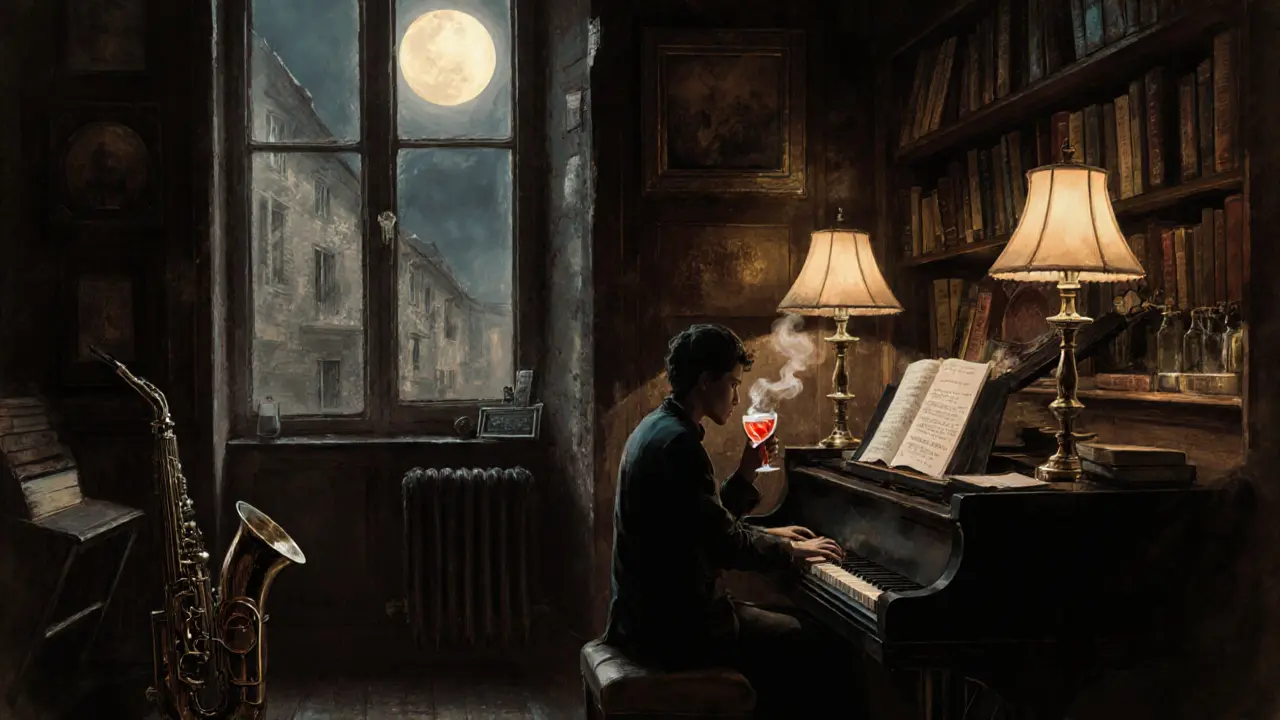
The Midnight Bistros and Brasseries
Most restaurants in Paris close by 10:30 p.m. But not the ones that matter. The real late-night spots are the bistros that never turned off the lights. Le Comptoir du Relais in Saint-Germain has been open until 3 a.m. since 1996. The menu doesn’t change. It’s the same duck confit, the same steak frites, the same crème brûlée. But the mood does. At 1 a.m., the tables are full of people who’ve just left a concert, a gallery opening, or a breakup. No one talks about their day. They just eat, sip wine, and stare out the window.
Then there’s La Fontaine de Mars in the 7th. It’s a brasserie with white tablecloths and waiters who remember your name. They serve oysters until 2 a.m. on weekends. The wine list? 47 bottles, all under €25. The chef, a former Navy cook, still makes his own pickled herring the way his grandmother did. You won’t find this on any travel blog. You’ll only hear about it from someone who came here after a 3 a.m. train and didn’t want to go home alone.
How to Navigate Paris After Dark
Paris isn’t dangerous at night, but it’s not always easy to find your way. The metro shuts down around 1:15 a.m. After that, you’re on foot or in a taxi. Uber works, but it’s expensive. The best option? Walk. Paris is small. The 1st, 5th, and 6th arrondissements are walkable even at 2 a.m.
Here’s what works:
- Start in Montmartre after the cabaret show. Walk down the hill to Place du Tertre. The street artists are gone, but the cobblestones are still warm from the day’s sun.
- Head to the Latin Quarter. Find a bar with live music. Sit at the counter. Ask the bartender where they go after their shift.
- Don’t chase the “hottest” spot. The best places are the ones with no sign, no Instagram, and no line.
- Carry cash. Many small bars don’t take cards after midnight.
- Learn to say “Encore un verre, s’il vous plaît.” It opens doors.
The key is patience. Parisian nightlife doesn’t rush. It unfolds. One drink leads to another. One conversation leads to a new friend. One midnight walk leads to a place you didn’t know existed.
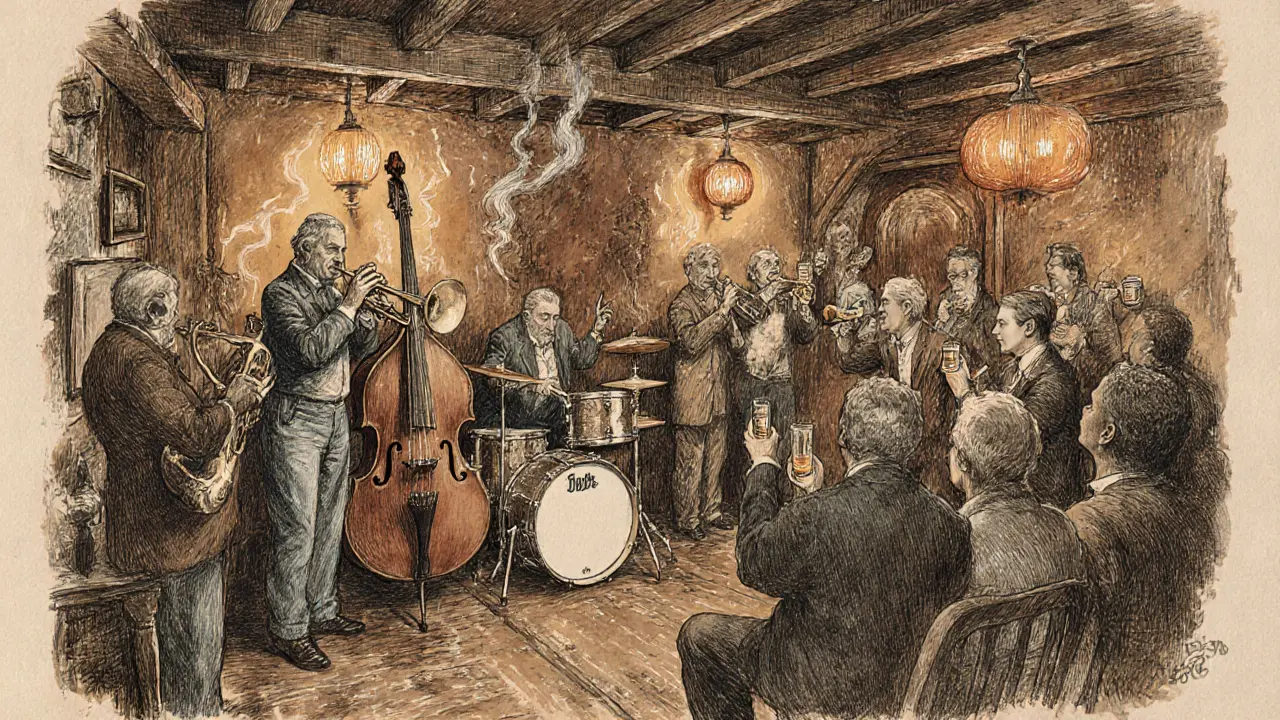
What to Avoid
There are traps. Tourist traps, mostly. Avoid the cabarets on the Champs-Élysées. They’re overpriced, scripted, and designed for people who want to say they “did” Paris. Skip the clubs near the Eiffel Tower that charge €50 just to get in. The music is EDM played on loop. The crowd? People taking selfies with sparklers.
Also, don’t expect to find a Starbucks at 3 a.m. Paris doesn’t do chains after dark. The city thrives on small, independent spaces. That’s the point.
Why It Still Matters
Parisian nightlife isn’t about partying. It’s about connection. It’s about the old man who still brings his violin to the café every Friday. The woman who sings in a band but works as a librarian by day. The student who stays up until dawn writing poetry in the corner of a bar, not because she’s trying to be cool-but because the quiet hum of the city feels like home.
This is what you won’t find in guidebooks: the way the streetlights flicker over the Seine at 3 a.m., the smell of fresh bread from a bakery that just opened, the sound of a violin drifting from an open window. Paris doesn’t offer nightlife. It offers moments. And if you’re lucky, you’ll leave with one that sticks with you longer than any photo ever could.
Is Paris nightlife safe at night?
Yes, Paris is generally safe at night, especially in central areas like Montmartre, Saint-Germain, and the Latin Quarter. Stick to well-lit streets, avoid isolated parks after midnight, and keep your belongings close. Most nightlife spots are frequented by locals and tourists alike, and crime targeting visitors is rare. The biggest risk is pickpockets in crowded areas like the metro or near tourist hotspots-so stay aware, not afraid.
What time do Paris bars and clubs close?
Most bars close between 2 a.m. and 3 a.m., especially in residential neighborhoods. Some jazz clubs and underground spots stay open until 4 a.m., particularly on weekends. Clubs in the 10th and 11th arrondissements often run until 5 a.m., but they’re not the flashy, dance-floor types-you’ll find intimate spaces with live music instead. Always check ahead, as closing times can vary by neighborhood and day of the week.
Do I need to book tickets for cabarets like Moulin Rouge?
Yes, absolutely. Shows at Moulin Rouge and Le Chat Noir sell out weeks in advance, especially in peak season. You can book online through their official websites, and tickets include the show and a drink. Prices start at €100, and there’s no walk-in option after 8 p.m. If you’re on a budget, look for weekday shows-they’re cheaper and less crowded.
Are there any free nightlife options in Paris?
Yes. Many jazz clubs have free entry before midnight, especially on weekdays. The Seine riverbanks are open 24/7, and you’ll often find musicians playing acoustic sets under the bridges. Libraries like the Bibliothèque nationale host free poetry readings late into the night on Thursdays. And don’t underestimate a simple walk through Le Marais after dark-it’s quiet, beautiful, and full of hidden courtyards where people gather with wine and conversation.
What’s the best way to get around Paris after the metro closes?
After the metro shuts down around 1:15 a.m., your best bets are walking, taxis, or Vélib’ bikes (which are available 24/7). Uber and Bolt work, but surge pricing kicks in after midnight. Walking is often the most rewarding option-Paris is compact, and the city looks completely different at night. If you’re heading farther out, use a taxi app or call a local dispatch service like G7. Avoid unlicensed cabs.
